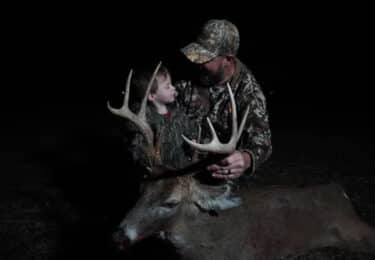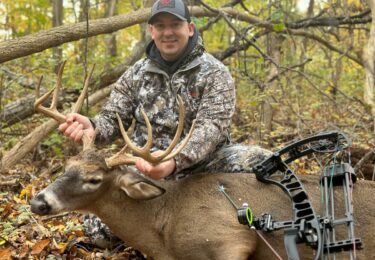Life is cyclical. The globe spins, hurtling us through time and space at a thousand miles per hour (literally) causing the seasons to move. Winter loses it’s icy grip on the earth and the renewal of spring bursts forth into full bloom and blossom. The warming develops into the heat and green of summer, and life is vibrant. Then, as everything does, life waxes colder and the earth explodes with color in her beautiful swan song of autumn before descending back into her cryogenesis, awaiting her return again next spring. So also is the game we pursue, for they also move in cyclical patterns in accordance with the seasons. If you pay close attention to what they have to say, these patterns can lead you to success in the field year after year. We call the study of these patterns scouting, and by the end of this entry you will have learned everything you need to know on how to do it and do it well.
Scouting is a simple practice that can be boiled down into four basic steps: study your game; learn the land; tips, tools and tactics; and lastly, evaluate, adapt, and execute. Although the steps are simple, it would be a grave error to approach this endeavor with complacency. The more time and effort you pour into the completion of these steps the higher the probability of success. Additionally, we must remember that the game we chase are wild animals with minds of their own and success is never guaranteed. However, we can and should stack the deck in our favor as often as we can.
Step 1: Study your game
Choose Your Game

The study of the game animal you choose to chase is vital to your successful harvesting of said animal. I believe that it’s one of the most overlooked steps in many hunters’ preparation, and it’s most likely the reason most bears, bulls, bucks, and birds live to see another hunting season. The first step is to determine which specific game animal you want to pursue. While this may seem obvious, the nuances between different individuals of the same species can make all the difference between success and failure.
For example, if you decide that you’re going to hunt whitetail deer, it isn’t enough just to study the species as a whole. What region of the country will you be hunting them in? What time of the year? Will any deer do, or are you targeting bucks specifically? Will any buck do, or are you looking for only big, mature bucks? Once you make this decision, focus your research on understanding the animal and everything about what makes them tick.
The Physical Survey
Start with the physical aspects of the animal. Determine what they should look like and how to identify an animal of the quality you determine sufficient. How big in stature should they be? What color should they be? What are the defining characteristics of the animal? This could be things like thick, large antlers, a sway back, visible brisket, pot belly, and roman nose on a deer or elk, large round heads with comparatively small ears on bears and mountain lions, or long beards and full uniform tail fans on turkeys.
The Psychological Survey
After you’ve identified the physical aspects, learn about their habits and mannerisms. Where do they live? What do they eat? When do they like to move? Are they solitary or herd animals? How does their behavior change as the phases of the year change? How does their behavior change during rutting/mating season? How do outside influences like predation and/or hunting pressure affect them? This information will be crucial to successful scouting and will make the rest of the following steps much less stressful, more accurate and more fun.
Step 2: Learn the terrain

Terrain study has come a very long way in the last few years. We are fortunate enough with the advent of satellite technology to have very high quality online maps and you should absolutely take full advantage of them. Additionally, companies like OnX and Basemap have also come out with high quality mapping apps that make “e-scouting” easy and organized. They also allow you to add personal waypoints and landmarks to help you navigate the land and locate specific areas of interest. However before e-scouting was ever dreamed of, there were paper maps. The one thing about paper maps is they never run out of battery or need an internet connection, which makes them useful in remote or backcountry situations.
Map Types and How to Read Them
Whether online or in paper, maps are generally similar in the way they are oriented and read. First of all, a map has a compass and key to tell you orientation and distance. It also has a legend to let you know key words and features of the map.The first map to reference when looking at an area is a Topographical or topo map. These show you the least amount of detail, but if you know what you’re looking for, they will tell you almost everything you need to know. Topo maps show the contour of the terrain through a series of lines. When the lines connect into a circle, that indicates a peak. Lines that are close together indicate steep terrain while far apart lines indicate flat land. Using the species knowledge you gained in step one, determine what terrain is the preferred habitat of your game and start there.
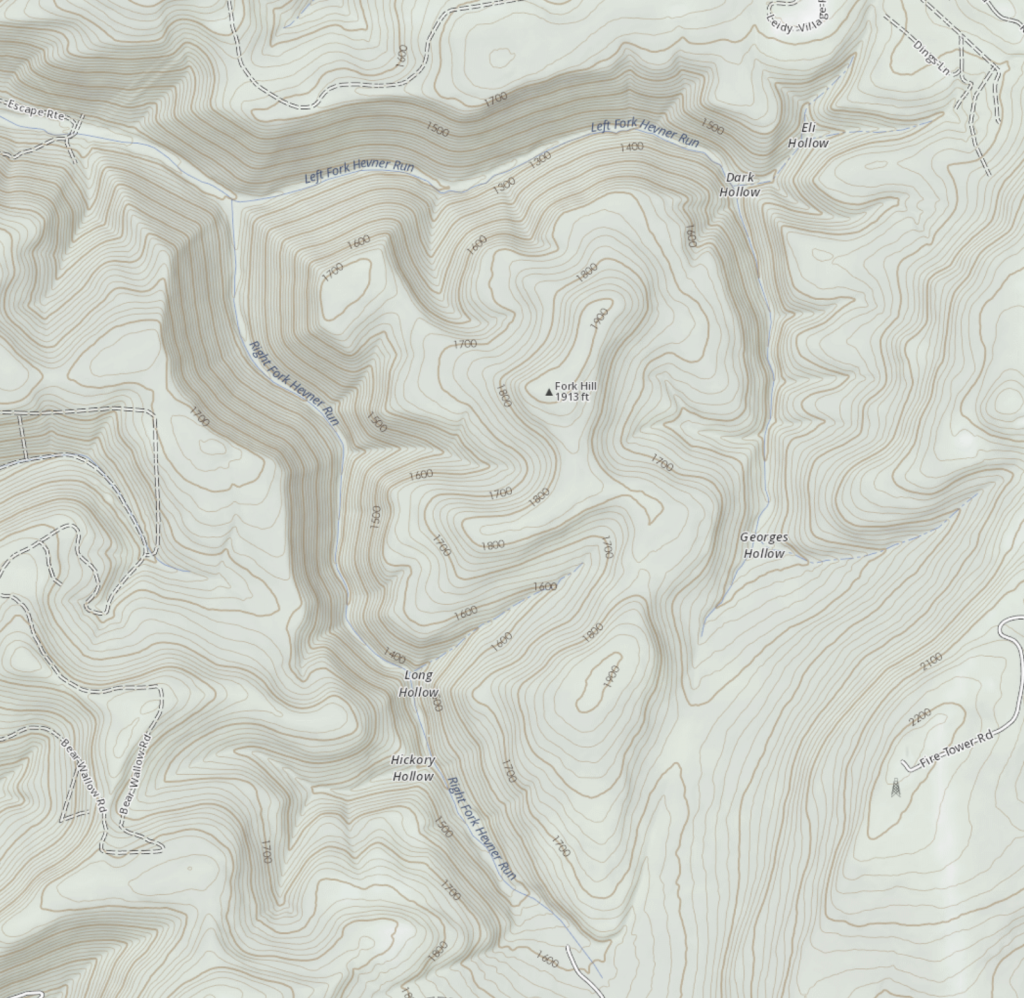
Next look at a terrain map like the ones that the United States Forest Service (USFS) provide. These also have topo lines on occasion, but not always. These maps will give you more insight into the other terrain features of the area such as streams, forests, rock outcroppings, roads, etc. In addition to the topo study, this will give you another piece of the puzzle to determine where your game may be.
Now if we lived 1982, our terrain survey would be over. However we do not in fact live in the 80s anymore, and in 2020 we have high resolution satellite imagery. Use this. Satellites will give you the final piece of the puzzle, and help you learn everything you can possibly learn without stepping foot onto the property. For instance, what type of trees are on the property? How dense are they? Are there any barns, houses or outbuildings? Fences? Agriculture? Once you’ve gathered all the intel you can about the land and an understanding of the animals that call it home, it’s time to start the serious work in step three. Spying.
Step 3: Tips, tools, and tactics
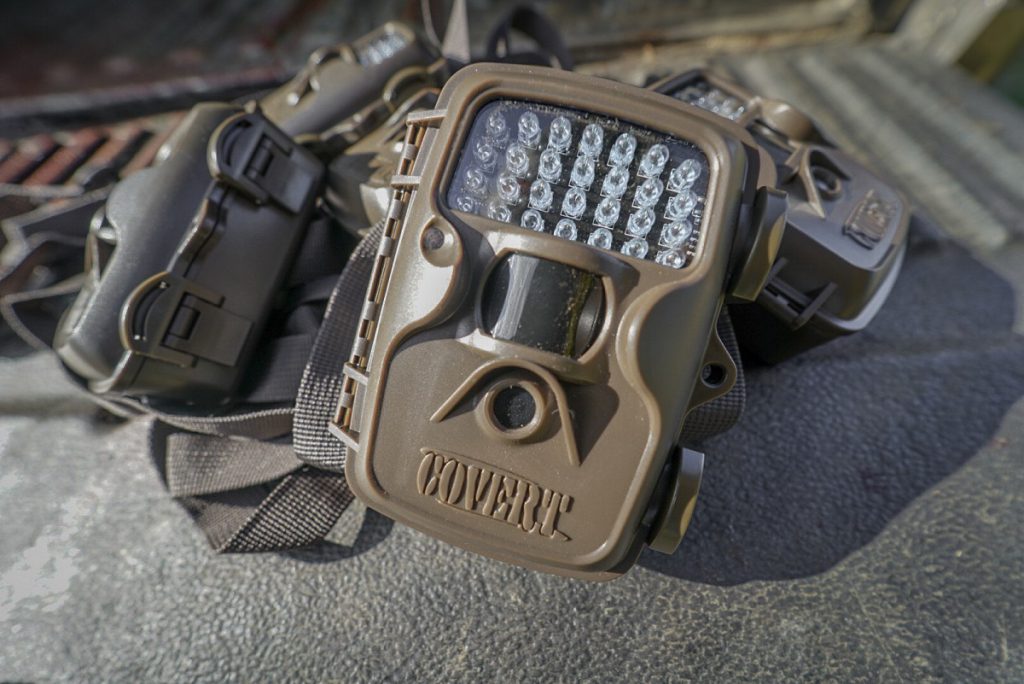
Technology
In the iPhone age we live in, it seems that society is always in search of the newest technology and “the next best thing”. Hunters often fall for this charade as well. While new tech and gadgets have their place, they are only one tool in the successful hunter’s toolbox. We mustn’t forget that bears, bulls, birds, and bucks don’t use cell phones and trail cameras. They don’t see them as helpful, they see them like we would see Marvin the Martian’s super weapon to blow up the earth. To that end, the overuse of these implements will train the animals to avoid them. If that’s the only tool you have, you’re in for a long season and you might have to fire up the kettle for your tag soup.
Let’s start with trail cameras. I personally only really use them for inventory purposes to determine what game is in the area and how they’ve changed/developed from years prior. Another common use is to help determine movements and patterns and pinpoint areas that may be productive. While valid, I personally believe that the research knowledge you’ve gained up to this point about the species of game and the land they inhabit will tell you enough to get you headed in the right direction. Additionally, most species of game animals rely heavily on their sense of smell. Every time you go into your hunting area to check your camera, you are saturating the ground with your scent. Now he knows you, he doesn’t like you, and he will try to avoid you because he correctly assumes you mean to do him harm. There’s a dichotomy here however, because what I’m going to cover next is, in my opinion, the most underrated tool we currently have: boots on the ground in your hunting area.
The value of physically going to the place you plan to hunt and actually laying eyes on it is underappreciated. Back in your pappy and grandpappy’s day, this was the only way to scout other than paper maps. It worked for them and it will still work for you. The dichotomy comes into play in finding the balance of going in far enough to see what you need to see, while staying far enough away to avoid being detected by your game. In my opinion, the best strategy is to locate some high elevation areas where you can sit with some optics and see a great distance and be patient. Glass the area and make mental or physical notes about what you see. Were your previous assumptions about the area correct? Was your understanding of the topography accurate? What kind of game did you see and what is the trophy quality in the area? Do you need to explore further or can you make a solid game plan based on the information you currently have? How will my game plan in this area change with different conditions (weather, wind, thermals, time of day, outside pressures like other hunters or predators etc.)? After answering questions like these, evaluate and adapt based on your intel.
Another great tactic if you plan on hunting more open country is to glass from a vehicle. This allows you to be more mobile, covering a lot of ground in a shorter period of time while containing your footprint in the area. If you choose to use this tactic however, limit your travel to only areas where your game is used to seeing vehicles such as roads, trails and farm lanes. The presence of a vehicle where the animals are not used to seeing one will be set off the alarm bells in their head.
The most important thing to remember in this step of the scouting process is that now is not the time to be aggressive. This is a clandestine spy mission ladies and gentlemen. Just like 007, you want to go incognito and under the radar. If your cover is blown, all of that information you just discovered could be useless. It is far better to abort the mission on a scouting trip without seeing everything you wanted to see if you believe you’re pushing the envelope too far.
Step 4: Evaluate, adapt, and execute, repeat
Congratulations! You’ve made it to the fun part: taking your weapon afield and going hunting. This is the part where you get to take all of your hard work and put it to the test. A lot of people think that the scouting is over at this point. A lot of people are wrong. The most successful hunters in the woods know that scouting only stops once you’ve reached your objective of success in the field. In order to be successful, you have to be willing to evaluate the most recent information you have, adapt to the current conditions and make an updated gameplan, then go execute it. Remember, they have home field advantage, so you might have to get creative and aggressive if your first plan doesn’t work. Every time your feet touch the field, you either kill or you learn. Eventually, if you persistently follow the evaluate, adapt, and execute formula, you will kill.
After all of this however, some of you may ask “is it really necessary? My cousin’s wife’s brother who has the brainpower and intestinal fortitude of a ball peen hammer sat up against the barn behind the house without doing any preparation whatsoever last fall and killed a 10 point.” This may be true, but remember that blind squirrels find nuts on occasion too. If longevity and repeated success in various situations is what you seek, you need a formula to follow and the willpower to put the work in. That formula is simple: success = preparation + opportunity + action. Today you’ve been given the blueprint for preparation. Use it well, and when the opportunity arises, take swift and decisive action and success will surely find you. Good luck and happy scouting!
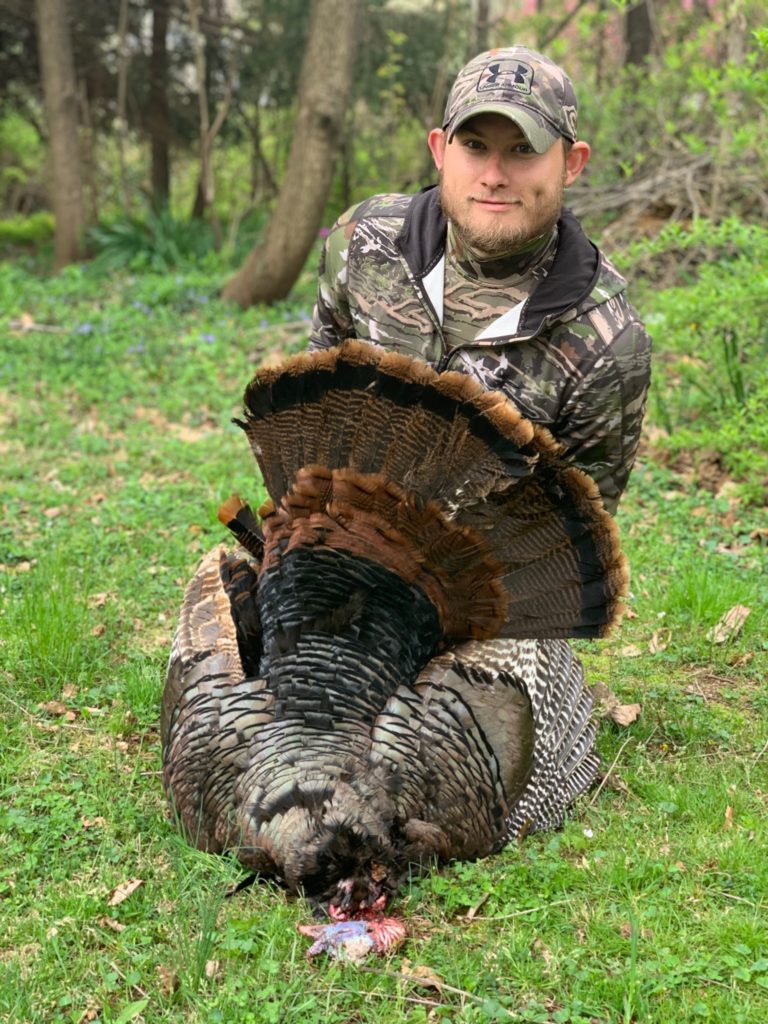
To see more from Dalton follow him on IG: https://www.instagram.com/dwbowhunter12/
For everything Cervicide be sure to checkout our Podcast https://whitetailtheories.podbean.com/
and join our Facebook Group https://www.facebook.com/groups/cervicidenation
